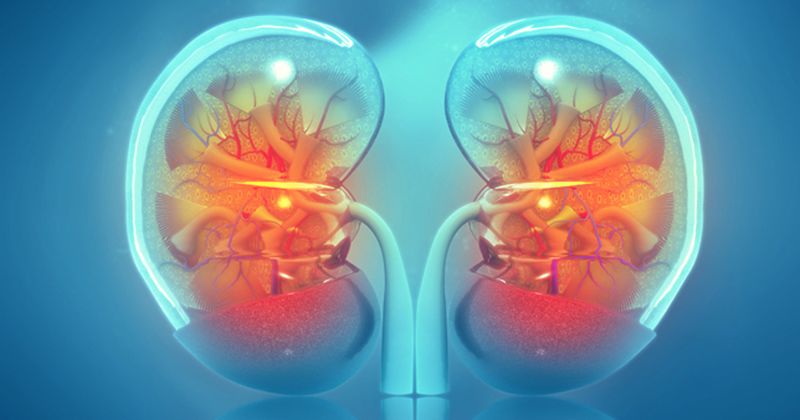Acute kidney injury may not predict worsening kidney function
Key takeaways:
- A new study suggests that kidney disease found after an acute kidney injury is often present before the injury.
- An expert said those with acute kidney injury should still be monitored for kidney function.
The link between mild-to-moderate acute kidney injury and subsequent worsening kidney function was small and not statistically significant in patients with chronic kidney disease, a recent study found.
As a renal fellow in the mid-1990s, Chi-yuan Hsu, MD, MSc, a professor of medicine at the University of California, San Francisco, School of Medicine, told Healio that he was taught acute kidney injury (AKI) “was an entirely reversible condition without long-term sequelae.”

“Then research by us and others over the past 15 years clearly showed that is not the case, especially for severe AKI (eg, AKI requiring acute dialysis),” he said. “Now, however, many people have come to believe that even mild-to-moderate AKI causes long-term adverse consequences, which we are skeptical about.”
For the current study, Hsu and colleagues evaluated the course of kidney function before and after an AKI episode among 3,150 adults with chronic kidney disease. They measured kidney function using estimated glomerular filtration (eGFR) rates based on serum creatinine levels (eGFRcr) and cystatin C levels (eGFRcys). The findings were recently published in Annals of Internal Medicine.
Of the participants, 44% were women, 43% were non-Hispanic Black individuals and the mean age was 65 years.
During a median follow-up of 3.9 years, the researchers found that 433 participants had at least one episode of AKI.
In unadjusted analyses, each episode of AKI was associated with an absolute change of:
- –2.3 (95% CI, –3.7 to –0.86) mL/min/1.73 m2 in eGFRcr; and
- –3.61 (95% CI, –6.39 to –0.82) mL/min/1.73 m2 in eGFRcys.
However, in fully adjusted models, the declines were attenuated to:
- –0.38 (95% CI, –1.35 to 0.59) mL/min/1.73 m2 for eGFRcr; and
- –0.15 (95% CI, –2.16 to 1.86) mL/min/1.73 m2 for eGFRcys.
According to the researchers, both CI bounds in the fully adjusted models “included the possibility of no effect.”
Additionally, estimated changes in the eGFR slope after AKI determined by serum creatinine (0.04 [95% CI, –0.3 to 0.38] mL/min/1.73 m2 per year) or cystatin C (–0.56 [95% CI, –1.28 to 0.17] mL/min/1.73 m2 “also had CI bounds that included a possibility of no effect,” they wrote.
“We were expecting some attenuation,” Hsu said. “We did not expect there would be no statistically significant association.”
Hsu said that even if AKI is considered a “failed renal stress test” and many of the kidney problems after mild-to-moderate AKI occur before AKI, “those who experienced AKI should have more careful monitoring of kidney function (eg, check proteinuria 3 months after AKI hospitalization, which is something opinion leaders/guidelines recommend).”
“It is not possible for all AKI survivors to be seen by nephrologists, so PCPs will have a key role to risk stratify AKI survivors,” he said.
Moving forward, Hsu said that future research should focus on “more sophisticated subtyping of AKI.”
“This study looked at outcome only at eGFR by creatinine and cystatin C, which are commonly used in clinical practice,” he said. “But there are biomarkers currently being developed which capture more subtle renal damage and other dimensions of kidney health besides glomerular filtration and those are fruitful future research avenues.”
